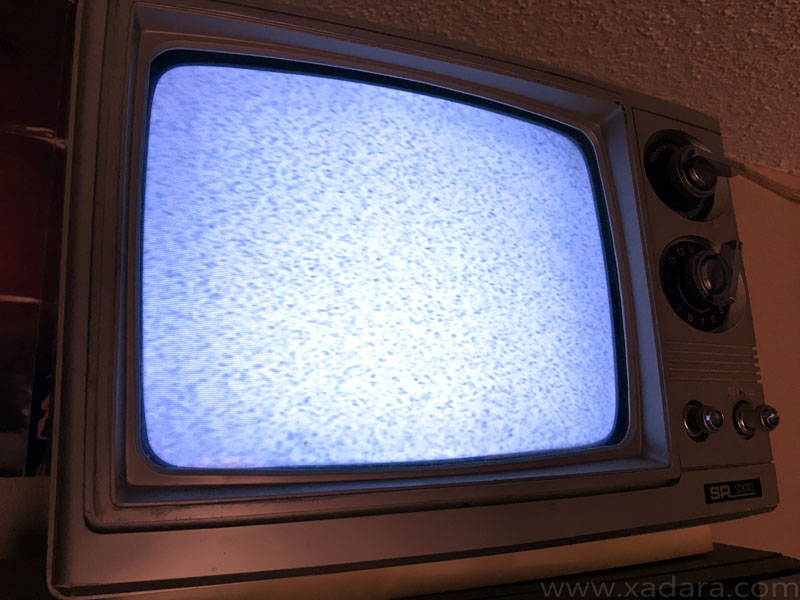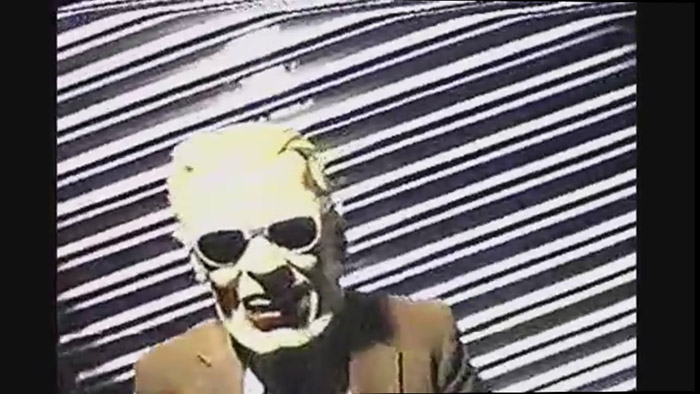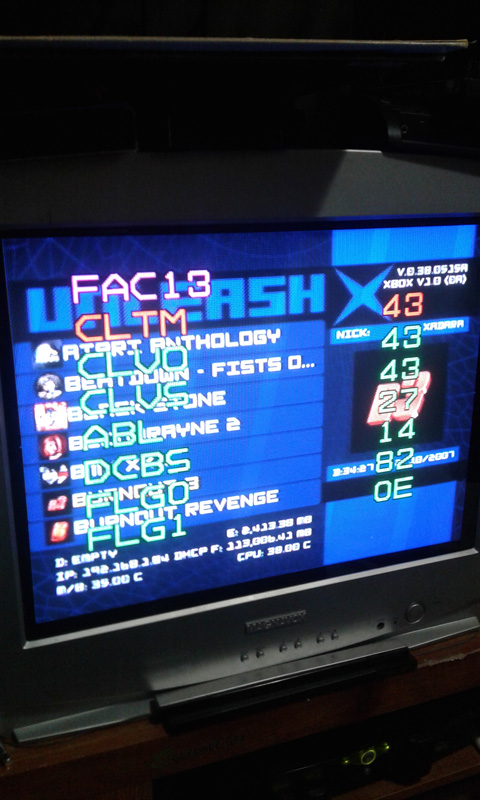Today, June 12th 2019 marks 10 years since the mandated day that terrestrial television — you know, the “over the air” type you get with an antenna — was set to end analog broadcasts and go “all digital.”
It’s actually one hell of a complicated story — far too much for me to go into detail on here. In fact, I won’t focus on the technical stuff here beyond providing an understanding of what was going on — my focus is actually personal experiences of the transition at the “human” level.

That being said, this is it in somewhat of a simple form: The FCC wanted to free up the frequencies used for television broadcasts for other uses. There’s only so much space in given frequency ranges that can be allocated, and Television took up quite a bit of space surrounding the FM radio spectrum. In fact, all of United States radio broadcasts falls, if memory serves, in between channels 3 and 4 in the television frequency range — this serves to show just how much space Television broadcasts needed.
Digitally compressed streams, however, occupy rather small cross section of the broadcast spectrum and had additional benefits including, by the time the transition finally happened, the ability to handle high definition broadcasts, something analog television systems simply were not capable of.
It’s far more complicated than that, to say the least, but that’s the gist of the reasoning behind it. Plans for this were set in motion all the way back in 1996 and kept being differed and differed, even being delayed from its “official” implementation date of February 17th 2009 until finally June 12th 2009 was set as the mandate — the day that all major stations had to end Analog broadcasts.

This wasn’t going to be a cold cut off, however — for years prior many stations had begun digital broadcasting alongside the traditional analog signals and those with digital tuners could enjoy the new technology. Some major cities in the US, like New York, had equipment installed in 1998, but this equipment was destroyed during the September 11th attacks. Nonetheless, the broadcast equipment had been in use a decade before the transition actually happened, in some regions at least.
That new equipment was actually the key issue with the transition — the requirement for a Digital Tuner to be in the TV to actually pick up and process the ATSC (the digital TV standard in the US) broadcast signal. This caused nothing but grief for much of the American populace who, sadly, didn’t understand the concept and seemed to almost not want to learn it. They didn’t know what they did or didn’t have, and that just lead to more confusion.
Many Standard Definition TV’s sold in the years leading up to the switchover contained digital tuners – those consumers would experience no issues, only the loss of the analog broadcasts, which would be mirrored on the digital side anyway. These TV sets would carry a standardized logo “SDTV” colored in such a way to accent the “DTV” aspect – this, along with “EDTV” and “HDTV” made up a trio of logo’s which demonstrated the picture capability of the television and indicated that it was equipped with a Digital Tuner – if it didn’t have this, it likely was an analog only set.
/sdtv-edtv-hdtv-logos-aaa-5740dffc5f9b58723d7ddfbb.jpg)
For those who had an older, analog only set there were two options; buy a new television set, or get a “converter box” — basically an external digital tuner — for their current television. Naturally, the cheaper option was the external device and for those unwilling to or not with enough money to just buy a new set the boxes were quite popular. To help alleviate the cost of having to buy these boxes, the government actually had a coupon program. It, however, was regarded as a bit of a mess and some say it actually helped increase the cost of the boxes on a whole. Quite simply, it was an outstanding mess.
At this point in the article I’d like to write about what I experienced regarding the transition. At the time, I had cable service and thus wasn’t affected by this in any way. I did however pay attention, being the kind of person I am, both studying what was going on in general with the transition in the first half of 2009 and seeing the aftermath. Working where I did at the time, not directly in an electronics department but often passing by it and helping out there, provided me with some interesting insights.
To say people were confused would be putting it lightly. Most didn’t have a clue. At all. Not only did they not have a clue, they refused to learn. They didn’t comprehend even the basics of why this was happening, why they needed new equipment, what the benefits were, and they didn’t want to learn. They were angry. Outright hostile in some cases.

It wasn’t even about the money either — many of these people seemed to be well enough off. It was actually the less well of people who seemed to want to learn more about why this was going on. Don’t get me wrong, there were plenty of people angry they had to pay 10 bucks with their government coupon for a converter box. I question how many people even got them successfully connected and learned how to use them, honestly. Probably not as many as you would think…
Then there were the people who thought all TV’s were going to “break” at the same time and bought new ones as well as converter boxes. I recall one time explaining to someone that they didn’t need a converter box with their new HDTV after they said they were getting it for that very set they were buying then (so no, it wasn’t going to an old set somewhere else in the house) and when I politely explained that they didn’t need it (in the hopes of saving the box for someone who did, as they were becoming scarce at this time) the guy basically told me I didn’t have a clue what I was talking about, even though the words “Digital Tuner” were on the box for the TV he was buying!
Other people were happy to get information from me when I did assist them, though, of course, but there were plenty who were just outright hostile on all fronts.
I’m also reminded of the people who had cable service who thought they would need these devices, even though they, quite obviously, had cable and did not watch over the air broadcasts at all! As I said, at the time I had cable but of course knew I did not need any of these boxes. In fact, I never did get a box at all — even as a curiosity. I think I own one now as side effect of people giving me old electronics, but I have no idea where it may be. I do recall actually making a habit to ask people who I was helping if they already had cable or some other TV service — you’d be surprised how many said “yes” and were happy to know they didn’t need the equipment. The best I can say is that so much buzz on the news surrounded this event that everyone felt directly affected, even if they weren’t.

It’s just crazy to think how much information was put out about this, how easy it all actually was to understand when put in its most basic form, and yet so few people had any remote comprehension of what was actually going on. It demonstrates how people, sadly, simply refuse to learn about anything in their lives — they only want it to work without having to do anything to assist in this process, something simply alien to me as a concept.
For the next few months converter boxes would be sold and people late to the transition would still come and pick them up, but eventually people got new TV’s and tossed out the old ones, eliminating the problem. I’m certain some people are, for some reason, still using those converter boxes on their new TV’s, but whatever — as long as they are enjoying themselves.
As it stands the old analog sets – virtually all being CRT’s or “Tube TV’s” – have been relegated to the trash. Lucky sets may make their way to thrift stores, where strange hobbyists with a love for older technology may buy them and keep them alive, preferring to use them with their vintage AV equipment – recall my Magnavox set that I use for all my classic gaming and VHS / LaserDisc viewing. I’ve got a few older and more recent sets, none of which have digital tuners, which I use for whatever I may need them for.

Now no one really cares. Hell, I’m surprised I haven’t seen others bring this up, that it’s been a decade since this event, the biggest change to television in the US since the 30’s! Ah well, it’s just one of those things a geek like me would care about.
The transition was rough, and the technology has limitations that the original Analog systems did not, but still, at the end of the day we moved forward, and that’s fine. I just like the idea of keeping perspective on the past, even if it is just fuzzy antenna TV memories of yesteryear.
Finishing up, I’d like to share with you a video Ben of Oddity Archive did on this subject back in 2015. He goes into some detail on the history of the transition, the background of the technology, and shows archived clips of the switchover as it was happening from various sources. Quite the nice video if you have time to watch it.
Enjoy!
https://en.wikipedia.org/wiki/Digital_television_transition_in_the_United_States

1 Comment
Add a Comment